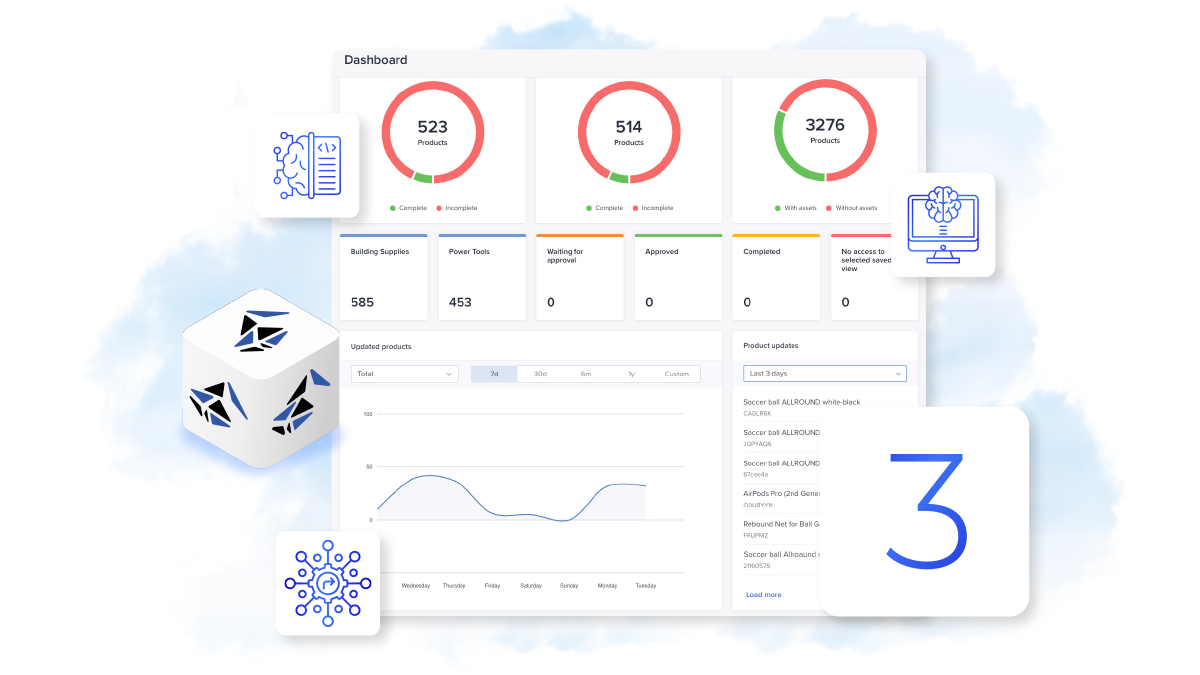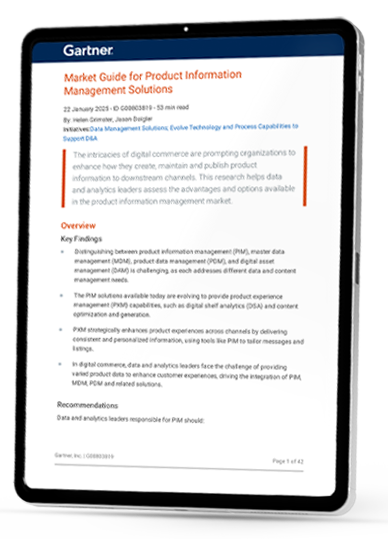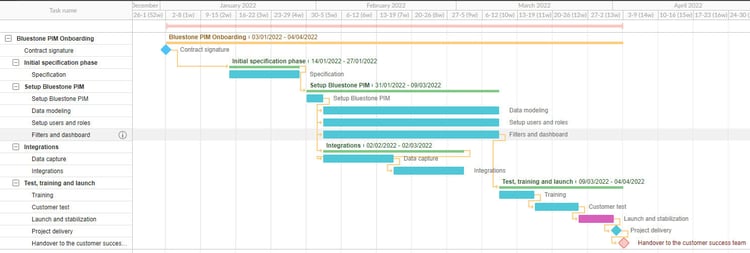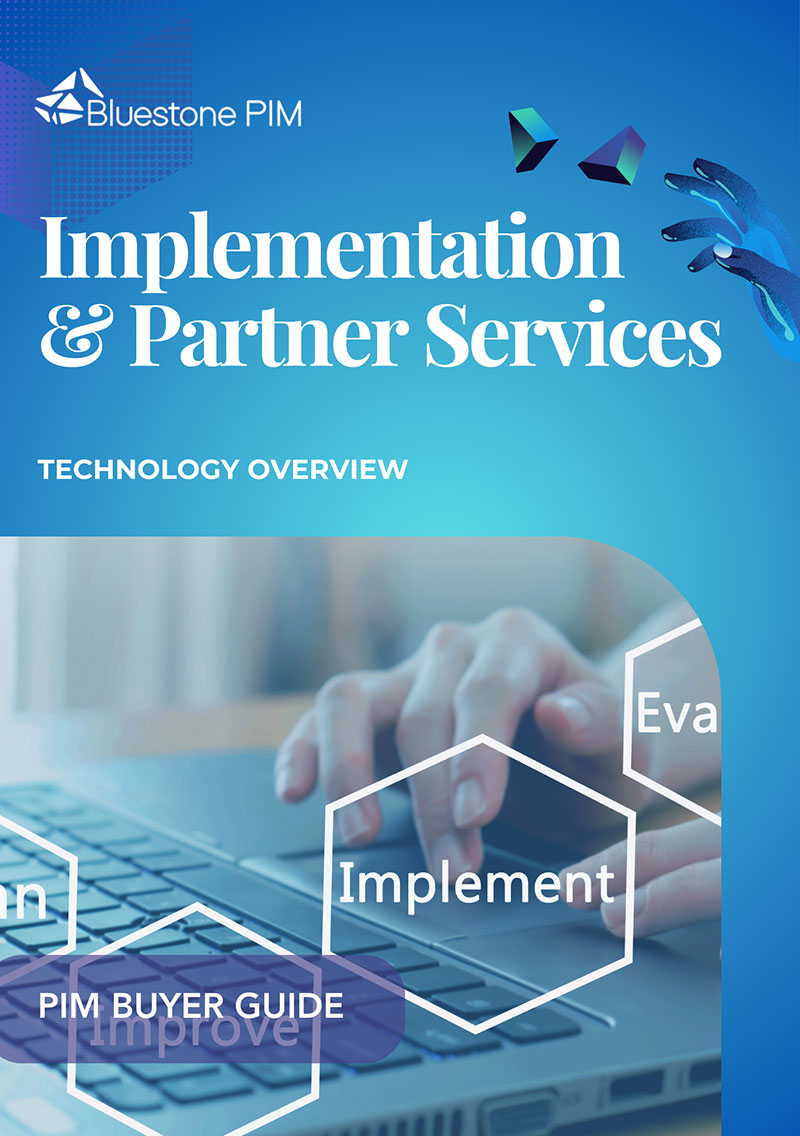3 Best Practices For PIM Implementation

Managing thousands of SKUs in Ecommerce?
Get monthly tips to become the e-commerce pro your team needs.
Entering new markets and scaling an e-commerce business is simply not feasible without automation.
Attempting to manage all product data tasks manually quickly leads to numerous errors and the continual need to increase headcount. By freeing your team from repetitive tasks that software can automate, you enable them to focus on driving sales and marketing.
This is what product information management (PIM) provides for retailers, manufacturers, and wholesalers.
PIM enables centralised management of product data and the swift setup of new sales channels, allowing your team to handle all product updates from a single platform.
Whether you are implementing a Product Information Management system for the first time or looking to transition to a new PIM solution, here are three best practices for successful PIM implementation:
1. Define the Project Scope
Ideally, your team should already understand the key challenges that a PIM solution can address before implementation begins.
If you are at the early stages of your product data management journey, check the article on 5 questions you should ask a PIM provider on a demo.
The onboarding process should begin with the creation of a data model, which includes:
- Clearly defines product data
- Attributes
- The desired catalogue structure
A visual representation of your product data is invaluable, providing a complete overview of all business-relevant information.
Depending on your internal resources, you may delegate this task to your IT department.
Your technical department will be able to assist in creating a data model in line with best practices for data modelling and catalogue structure.
Integration with ERP systems and customer-facing applications is essential, and Bluestone PIM can provide support where required. During the initial project phase, you should obtain an overview of the system architecture to which PIM will belong.
All data model and business structure specifications should be discussed in a dedicated meeting to ensure the PIM provider can meet your business objectives.
Alternatively, submit a Request for Proposal covering all necessary questions.

DOWNLOAD FREE E-BOOK
2025 Market Guide for PIM Solutions
The 2025 Market Guide by Gartner® will help data and analytics leaders understand the benefits and choices in the PIM market.
2. Assign the PIM Project
Successful implementation requires active engagement from your team. To ensure all business requirements are communicated effectively, establish an internal PIM project team.
Depending on the complexity of your project and the level of IT and master data competence required, assign roles such as:
- Project Owner
- Integration/System Architect
- Rollout/Deployment Manager
- Super User
- Brand Manager
If applicable, involving your technology partners can also be advantageous.
As a user, you will be introduced to the PIM Implementation Manager, who is responsible for overseeing a smooth onboarding process.
Whilst a PIM provider will support the transition, your team possesses invaluable knowledge of your company’s internal processes.
When addressing sales channels, product attributes, and digital asset management, it is essential to remain closely involved.
Assigning roles can only take place once project priorities, scope, and desired outcomes have been agreed during the initial stages.
3. Test the PIM Software
PIM implementation may take between two and five months, depending on the complexity of the PIM project.
For example, the number of channels to be connected, the absence of a clear architecture overview, or incomplete product descriptions can all extend the project timeline.
However, when implementing the PIM system and integrating various sales channels, you can leverage a range of PIM tools to analyse and enhance your product data, significantly easing your team’s workload.
Upon completion, your team will gain access to the test environment.

At this stage, they can review the implementation and verify that data is structured according to business objectives. The testing schedule will be determined by your team’s availability.
The PIM vendor will usually conduct training sessions in the early phase, ensuring your team enters the test environment with comprehensive knowledge.
During testing, the PIM Project Manager should address any questions regarding catalogue management, data integration, bulk editing, and customer experience.
If you have a large user base, notify the PIM Project Manager and request platform documentation to facilitate internal training for new team members.
What to Expect When Implementing Bluestone PIM
Bluestone PIM provides dedicated Project Managers and Architects to ensure that customers receive the right technical training to streamline operations and eliminate repetitive tasks. Our MACH (Microservices-based, API-first, Cloud-native, Headless) architecture delivers agility for the fast-paced e-commerce sector.
You can choose to implement Bluestone PIM independently or collaborate with one of our system integration partners.
Self-Implementation
If you have an experienced in-house development team and prefer to implement Bluestone PIM on your own terms, we provide comprehensive resources and tools to support you.
Our MACH architecture allows for extensive integration, and our clear documentation equips your team to manage the implementation confidently, from start to finish.
Once live, you can scale with demand by adding channel-specific attributes and following industry best practices.
Bluestone PIM Partner Network
Working with one of our trusted partners enables a structured, step-by-step Bluestone PIM implementation. Our network of system integrators and software experts, with deep knowledge of PIM and MACH architecture, ensures seamless implementation—from initial analysis through to development and launch.

The Bluestone PIM 7-Step Onboarding Plan
Here you can find the Bluestone PIM general implementation plan:
 Example of Bluestone PIM's implementation plan to onboard a client
Example of Bluestone PIM's implementation plan to onboard a client
Each customer’s onboarding plan is tailored according to specific PIM needs, including any additional Bluestone PIM applications (PBCs) or full ERP/CMS integrations. These requirements are identified during the sales process and incorporated into your onboarding plan.
The following list has the general project activities highlighted in the PIM onboarding plan you see in the graph above.
-
Discovery phase: specification, needs workshops, and solution analysis
-
Solution setup and configuration: users, roles, structure, and attribute inheritance
-
Data modelling support
-
Assistance with data capture
-
Integration support
-
Business rule definition and integration
-
Project management and organisation
The Bottom Line
Numerous enterprise systems can help you create accurate product information, improve team collaboration, optimise product management, enhance the customer journey, and strengthen loyalty.
To make informed buying decisions, assess not only the technical capabilities but also the onboarding plans of several PIM solutions. Clear communication with stakeholders and robust guidelines are crucial for a successful project.
Contact our team to discover how Bluestone PIM can help you implement a MACH-based PIM solution and unlock the full potential of your digital architecture.

DOWNLOAD FREE E-BOOK
PIM Buyer Guide: Implementation & Partner Services
Learn more about the Bluestone PIM implementation process.
Editor’s note: This post was originally published in June 2022 and has been updated with the latest information.




